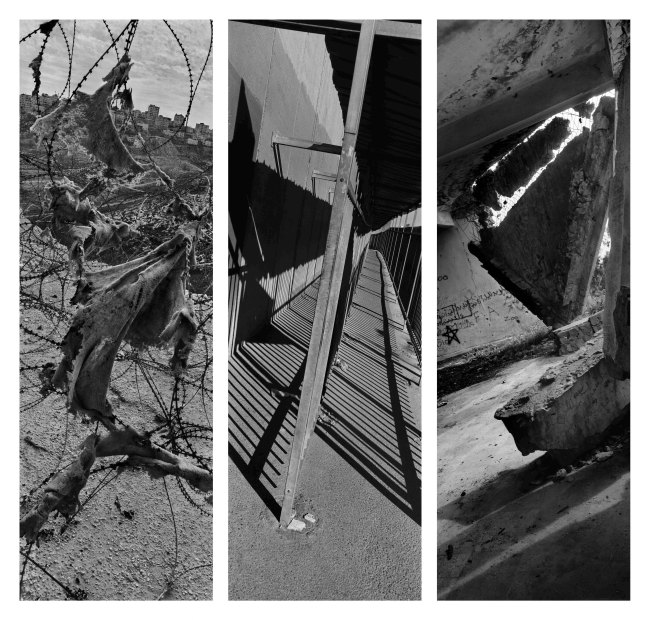Vatican turns to art patronage roots for Venice Biennale
By Korea HeraldPublished : May 15, 2013 - 20:19
VATICAN CITY (AFP) ― Five centuries after Michelangelo, the Vatican has commissioned fresh works on the biblical themes of creation and chaos for a show at the prestigious Venice Biennale art festival.
The exhibition explores themes from the Book of Genesis through works by artists including renowned Czech photographer Josef Koudelka ― but there are no depictions of the Madonna and Child or suffering Christs, the Vatican said Wednesday.
“Creation, Un-Creation, Re-Creation” brings Koudelka together with Italian artists from the Studio Azzurro and Australian-born American Lawrence Carroll in a show which probes themes from the essence of human relationships to the destruction wrought by natural disasters.
The exhibition explores themes from the Book of Genesis through works by artists including renowned Czech photographer Josef Koudelka ― but there are no depictions of the Madonna and Child or suffering Christs, the Vatican said Wednesday.
“Creation, Un-Creation, Re-Creation” brings Koudelka together with Italian artists from the Studio Azzurro and Australian-born American Lawrence Carroll in a show which probes themes from the essence of human relationships to the destruction wrought by natural disasters.

Organized by the Vatican’s culture minister Gianfranco Ravasi, the project ― which revives a tradition which once led to the creation of wonders such as Michelangelo’s Sistine Chapel ceiling ― will cost sponsors some 750,000 euros ($973,635) and will run from June 1 for six months.
The three Studio Azzurro artists behind the “Creation” theme look at the origins of humanity, with an interactive and multimedia installation which places the visitor at the centre of “a psycho-sensory and cerebral movement,” the Vatican said.
Koudelka’s “Un-Creation” draws inspiration from the sibling rivals Cain and Abel and “the material and ethical destruction” by man.
Carroll’s “Re-Creation” uses salvage materials to create a sense of a fresh start, the sort Abraham experiences after a dark period of war and destruction according to the Genesis.
Cardinal Ravasi, who organized the show along with the director of the Vatican museums Antonio Paolucci, said Pope Emeritus Benedict XVI, who resigned in February because of old age, had hoped the project would spark dialogue on the modern world and questions of faith.
The Vatican’s pavilion in Venice aims to “re-establish an interrupted dialogue” and remedy “a partial divorce between art and faith,” Ravasi said.
Modern art sometimes reduces its depiction of religion to “provocation and blasphemy” and, for its part, the Catholic Church often finds itself “restricted in its language,” while the show is an attempt to break free of such paradigms, he said.
“It is a seed, not a tree,” he added, suggesting the exhibition may be the first in a series of attempts by the Vatican to regain some of its prestigious standing in the art world.
The Biennale has been linked to some controversial blasphemous works since its first edition in 1895, when the Church asked Venice to ban Italian artist Giacomo Grosso’s ‘Supreme Meeting’, a painting depicting a coffin pawed by naked women.
Biennale president Paolo Baratta said the presence of the world’s smallest state at the festival “coincides with a period in which contemporary art has broken barriers” and risks falling prey to “the dangers of mercantilism.”
-
Articles by Korea Herald



![[AtoZ into Korean mind] Humor in Korea: Navigating the line between what's funny and not](http://res.heraldm.com/phpwas/restmb_idxmake.php?idx=644&simg=/content/image/2024/04/22/20240422050642_0.jpg&u=)
![[Exclusive] Korean military set to ban iPhones over 'security' concerns](http://res.heraldm.com/phpwas/restmb_idxmake.php?idx=644&simg=/content/image/2024/04/23/20240423050599_0.jpg&u=20240423183955)


![[Graphic News] 77% of young Koreans still financially dependent](http://res.heraldm.com/phpwas/restmb_idxmake.php?idx=644&simg=/content/image/2024/04/22/20240422050762_0.gif&u=)

![[Herald Interview] Why Toss invited hackers to penetrate its system](http://res.heraldm.com/phpwas/restmb_idxmake.php?idx=644&simg=/content/image/2024/04/22/20240422050569_0.jpg&u=20240422150649)






![[Exclusive] Korean military to ban iPhones over security issues](http://res.heraldm.com/phpwas/restmb_idxmake.php?idx=652&simg=/content/image/2024/04/23/20240423050599_0.jpg&u=20240423183955)



![[Today’s K-pop] Ateez confirms US tour details](http://res.heraldm.com/phpwas/restmb_idxmake.php?idx=642&simg=/content/image/2024/04/23/20240423050700_0.jpg&u=)